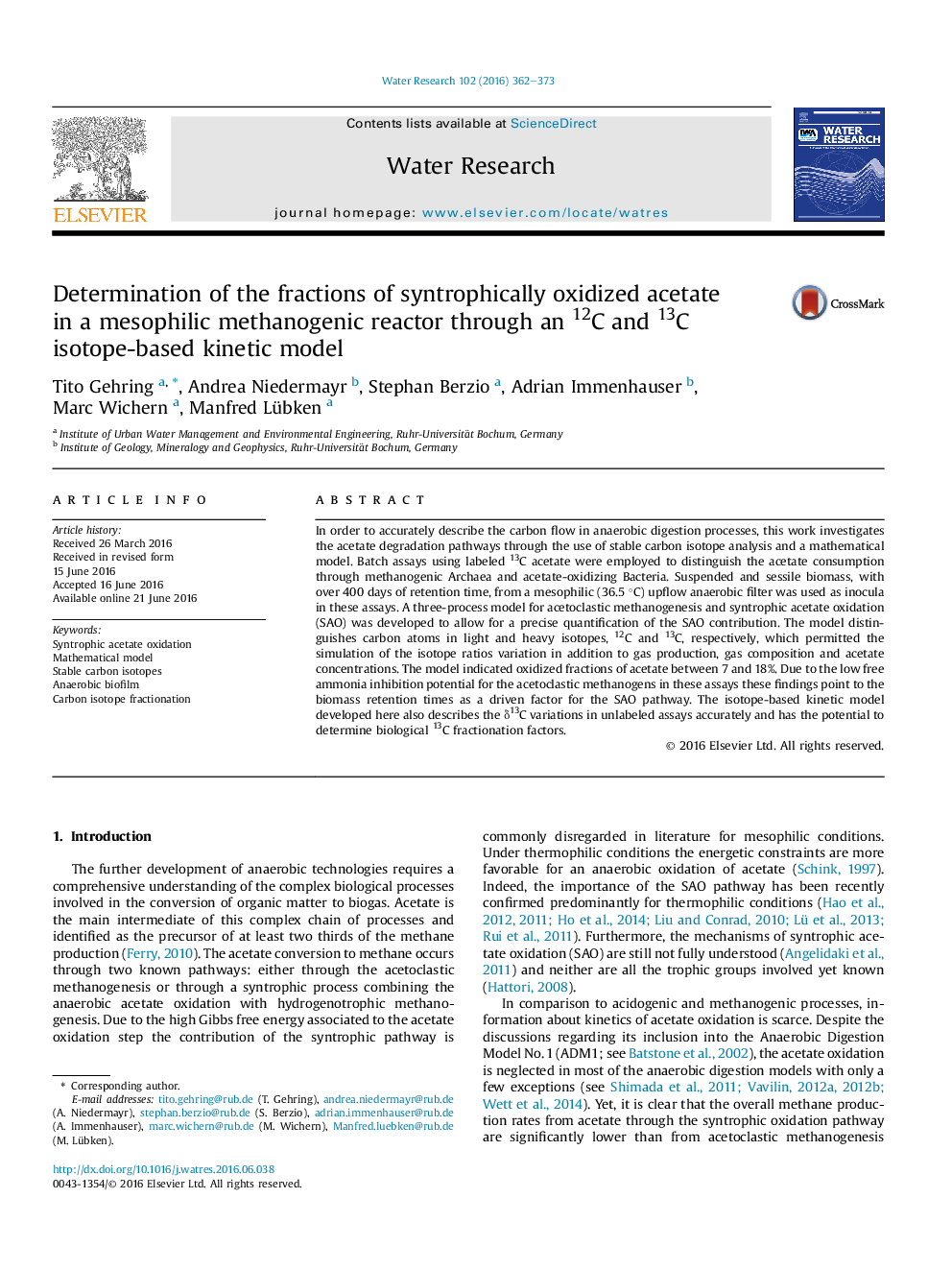| کد مقاله | کد نشریه | سال انتشار | مقاله انگلیسی | نسخه تمام متن |
|---|---|---|---|---|
| 4480866 | 1623066 | 2016 | 12 صفحه PDF | دانلود رایگان |
• Acetate oxidation is relevant for a mesophilic Methanosaeta dominated reactor.
• Quantification of acetate degradation pathways based on δ13C analysis.
• Dynamic acetate degradation simulation including carbon isotopes differentiation.
• Independent metabolic pathway determination for suspended and biofilm biomass.
• Identifiability of 13C fractionation factors through the developed kinetic model.
In order to accurately describe the carbon flow in anaerobic digestion processes, this work investigates the acetate degradation pathways through the use of stable carbon isotope analysis and a mathematical model. Batch assays using labeled 13C acetate were employed to distinguish the acetate consumption through methanogenic Archaea and acetate-oxidizing Bacteria. Suspended and sessile biomass, with over 400 days of retention time, from a mesophilic (36.5 °C) upflow anaerobic filter was used as inocula in these assays. A three-process model for acetoclastic methanogenesis and syntrophic acetate oxidation (SAO) was developed to allow for a precise quantification of the SAO contribution. The model distinguishes carbon atoms in light and heavy isotopes, 12C and 13C, respectively, which permitted the simulation of the isotope ratios variation in addition to gas production, gas composition and acetate concentrations. The model indicated oxidized fractions of acetate between 7 and 18%. Due to the low free ammonia inhibition potential for the acetoclastic methanogens in these assays these findings point to the biomass retention times as a driven factor for the SAO pathway. The isotope-based kinetic model developed here also describes the δ13C variations in unlabeled assays accurately and has the potential to determine biological 13C fractionation factors.
Figure optionsDownload high-quality image (272 K)Download as PowerPoint slide
Journal: Water Research - Volume 102, 1 October 2016, Pages 362–373
